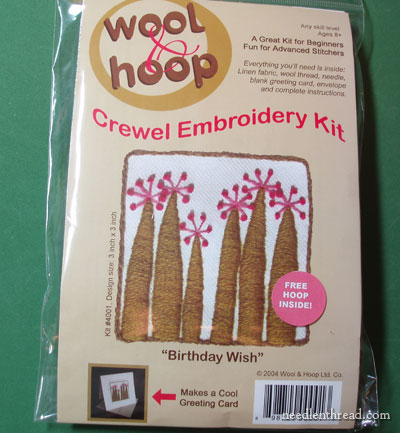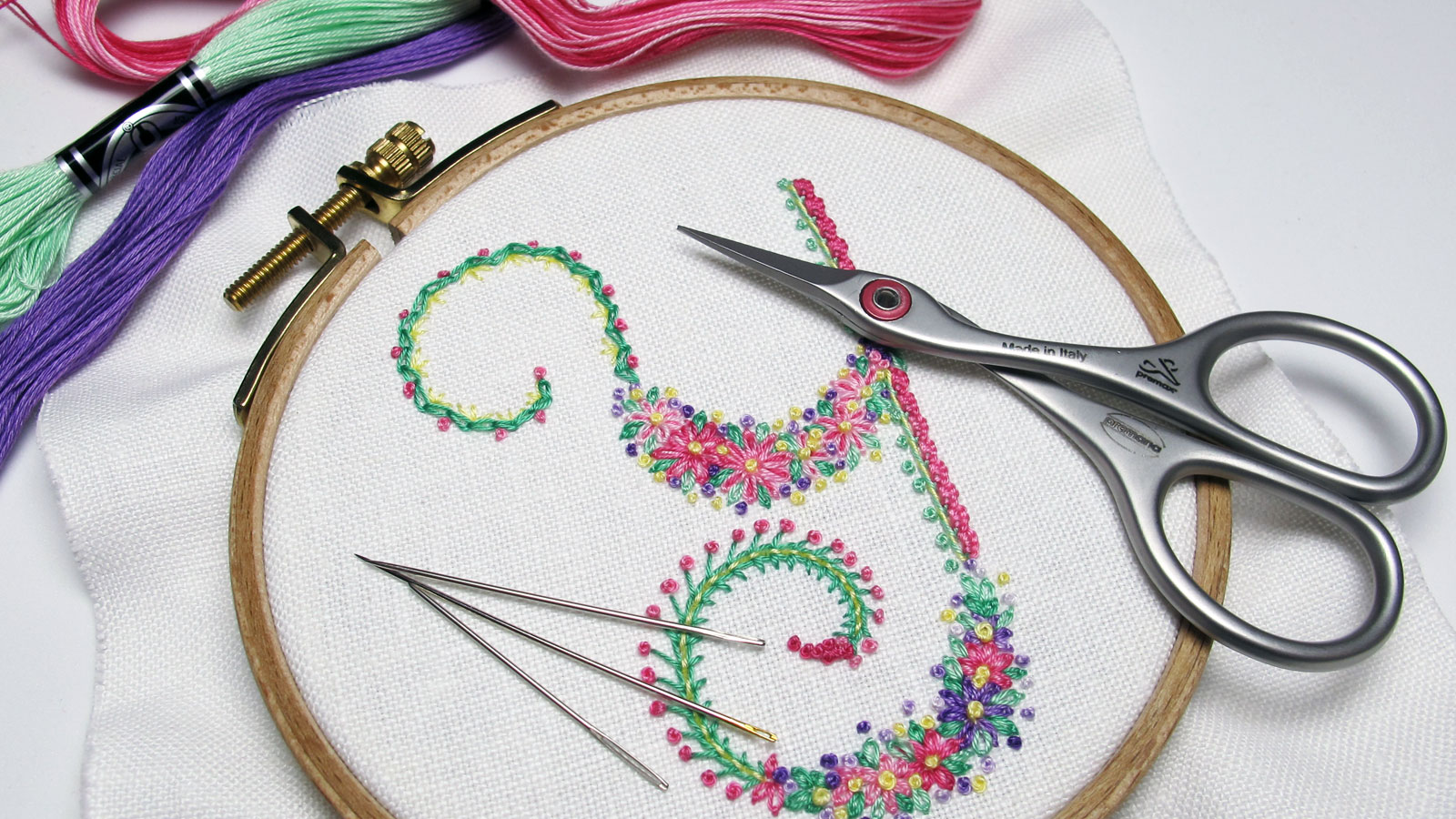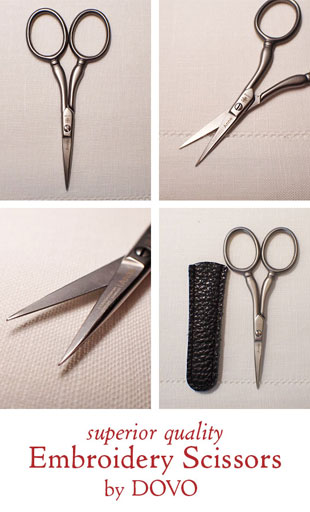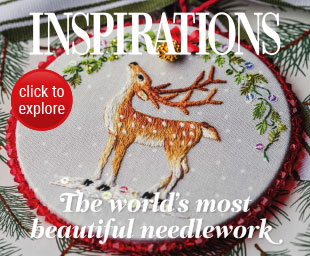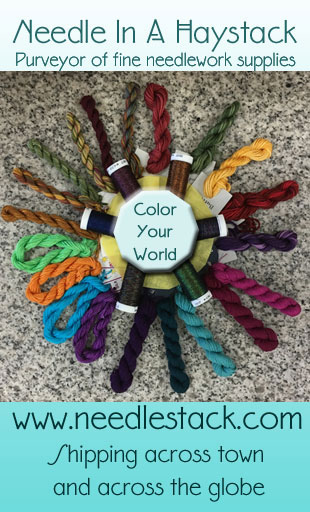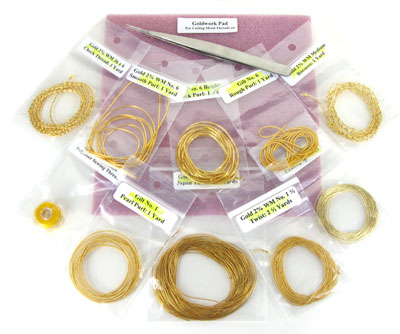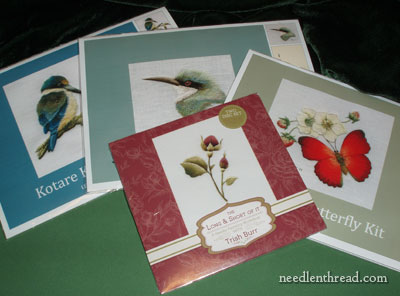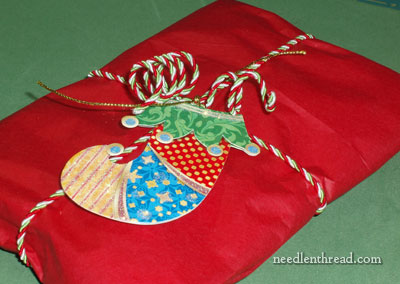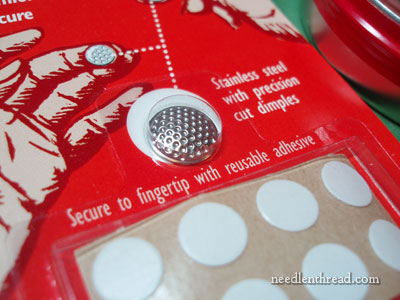Today’s give-away came about in a funny way.
I had already decided to do this 12 Days of Christmas series of give-aways, and had drummed up quite a bit of generous and enthusiastic participation from designers, needlework retailers and manufacturers, tool-makers and so forth.
One day, while in the midst of working out the details, I received an e-mail from a reader who had a question about Japanese flat silk. Since the question was a scientific-practical combination one regarding silk, I recommended the reader to contact Michael Cook of Wormspit, who knows a lot about silk. The reader wrote to Michael, who then forwarded the question to me. While we were going in circles, Michael and I struck up a conversation, and he told me about a whole collection of Japanese silk that he had received from Julie Mar, a needlepoint designer.
It so happened that Michael had surplus silk and he was trying to come up with a clever way of getting the silk into the hands of people who would benefit from it, appreciate it, and use it to its full potential. I told him about the 12 Days of Christmas, and he jumped on board!
So, today, thanks to Michael Cook of Wormspit, and Julie Mar of Julie Mar Designs, we have two collections of Japanese flat embroidery silk to give away!
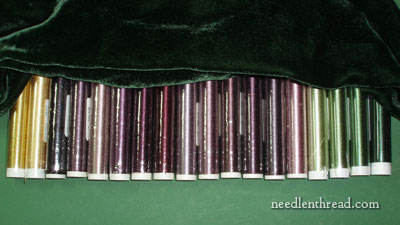 Continue reading “Third Day of Christmas: Japanese Silk – Lots of It!”
Continue reading “Third Day of Christmas: Japanese Silk – Lots of It!”
